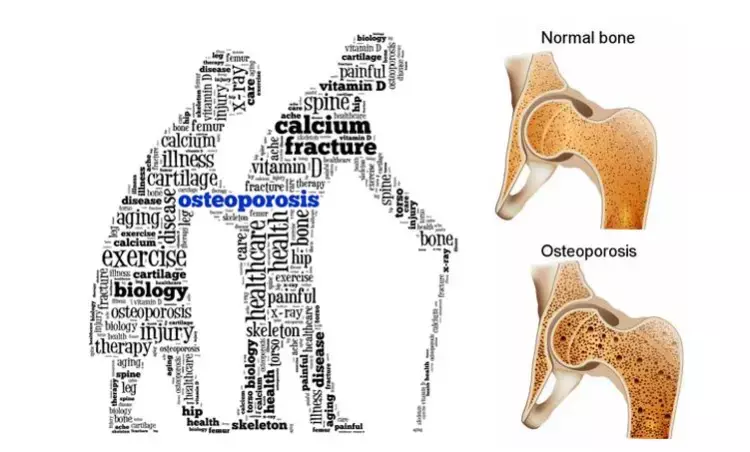- Home
- Medical news & Guidelines
- Anesthesiology
- Cardiology and CTVS
- Critical Care
- Dentistry
- Dermatology
- Diabetes and Endocrinology
- ENT
- Gastroenterology
- Medicine
- Nephrology
- Neurology
- Obstretics-Gynaecology
- Oncology
- Ophthalmology
- Orthopaedics
- Pediatrics-Neonatology
- Psychiatry
- Pulmonology
- Radiology
- Surgery
- Urology
- Laboratory Medicine
- Diet
- Nursing
- Paramedical
- Physiotherapy
- Health news
- Fact Check
- Bone Health Fact Check
- Brain Health Fact Check
- Cancer Related Fact Check
- Child Care Fact Check
- Dental and oral health fact check
- Diabetes and metabolic health fact check
- Diet and Nutrition Fact Check
- Eye and ENT Care Fact Check
- Fitness fact check
- Gut health fact check
- Heart health fact check
- Kidney health fact check
- Medical education fact check
- Men's health fact check
- Respiratory fact check
- Skin and hair care fact check
- Vaccine and Immunization fact check
- Women's health fact check
- AYUSH
- State News
- Andaman and Nicobar Islands
- Andhra Pradesh
- Arunachal Pradesh
- Assam
- Bihar
- Chandigarh
- Chattisgarh
- Dadra and Nagar Haveli
- Daman and Diu
- Delhi
- Goa
- Gujarat
- Haryana
- Himachal Pradesh
- Jammu & Kashmir
- Jharkhand
- Karnataka
- Kerala
- Ladakh
- Lakshadweep
- Madhya Pradesh
- Maharashtra
- Manipur
- Meghalaya
- Mizoram
- Nagaland
- Odisha
- Puducherry
- Punjab
- Rajasthan
- Sikkim
- Tamil Nadu
- Telangana
- Tripura
- Uttar Pradesh
- Uttrakhand
- West Bengal
- Medical Education
- Industry
Zoledronic acid therapy for osteoporosis may raise risk of incident AF: Study

Bisphosphonates, such as intravenous zoledronic acid (ZA) or oral alendronate, are commonly used as initial therapy for osteoporosis and malignancy-related bone disease.Although bisphosphonates are highly efficacious and generally safe, there remain specific safety concerns, including atypical femoral fractures, osteonecrosis of the jaw, and increased atrial fibrillation (AF).
In a recent development, researchers have found that Compared with denosumab, zoledronic acid (ZA) therapy for osteoporosis and possibly for malignancy-related bone disease is associated with modestly increased risk for incident atrial fibrillation (AFib) in the first year of treatment.the findings of the study have been published in Journal of Bone and Mineral Research.
Researchers under Kristin M D'Silva undertook the study To examine the risk of incident AF among patients receiving ZA compared with denosumab in the first year of treatment.
The team performed a new-user, active comparator cohort study including privately insured Americans between January 1, 2010, and June 30, 2019. Individuals aged ≥50 years without known arrhythmia or advanced kidney disease who initiated ZA were 1:1 propensity score (PS)-matched to individuals initiating denosumab in separate osteoporosis and malignancy cohorts. The primary outcome was incident diagnosis of AF (≥1 inpatient or ≥2 outpatient diagnostic codes) over 1 year. Secondary outcomes included stroke/transient ischemic attack (TIA) and nonvertebral fracture. In the osteoporosis cohort (n = 16,235 pairs), mean age was 71 years, and 93% were female. There was higher risk of AF with ZA compared with denosumab over 1 year (incidence rate [IR] = 18.6 versus 14.9 per 1000 person-years; hazard ratio [HR] = 1.25; 95% confidence interval [CI] 1.04 to 1.50).
Data analysis revealed the following facts.
- In the malignancy cohort (n = 7732 pairs), mean age was 70 years, and 66% were female.
- There was a numerically higher, albeit not statistically significant, risk of AF with ZA compared with denosumab over 1 year (IR = 46.9 versus 39.0 per 1000 person-years; HR = 1.19; 95% CI 1.00 to 1.43; p = 0.06).
- No difference in stroke/TIA rates occurred. In the malignancy cohort, ZA was less effective than denosumab at preventing nonvertebral fractures (HR = 1.32; 95% CI 1.01 to 1.74).
- Compared with denosumab, ZA treatment for osteoporosis and possibly for malignancy-related bone disease is associated with modestly increased risk of incident AF in the first year of treatment.
For full article follow the link: doi: 10.1002/jbmr.4174.
Primary source: Journal of Bone and Mineral Research
Dr Satabdi Saha (BDS, MDS) is a practicing pediatric dentist with a keen interest in new medical researches and updates. She has completed her BDS from North Bengal Dental College ,Darjeeling. Then she went on to secure an ALL INDIA NEET PG rank and completed her MDS from the first dental college in the country – Dr R. Ahmed Dental College and Hospital. She is currently attached to The Marwari Relief Society Hospital as a consultant along with private practice of 2 years. She has published scientific papers in national and international journals. Her strong passion of sharing knowledge with the medical fraternity has motivated her to be a part of Medical Dialogues.
Dr Kamal Kant Kohli-MBBS, DTCD- a chest specialist with more than 30 years of practice and a flair for writing clinical articles, Dr Kamal Kant Kohli joined Medical Dialogues as a Chief Editor of Medical News. Besides writing articles, as an editor, he proofreads and verifies all the medical content published on Medical Dialogues including those coming from journals, studies,medical conferences,guidelines etc. Email: drkohli@medicaldialogues.in. Contact no. 011-43720751


